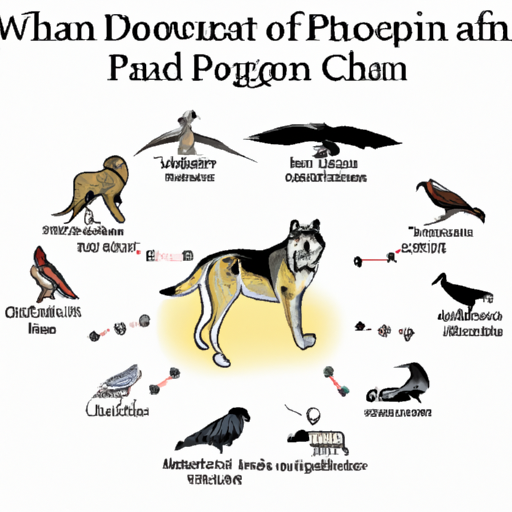As a caretaker, one of your primary concerns is ensuring the safety and well-being of those under your charge. When it comes to your pet dog, this includes understanding potential risks in their environment. Here’s a comprehensive guide to the various animals that pose a threat to dogs.
H2: Understanding the Food Chain
In the grand scheme of things, you’re right to be concerned. Your lovable pet is part of a larger ecosystem where survival often means being predator or prey. Certain animals, due to their size, strength, or natural instincts, might view your dog as potential food. This doesn’t mean you need to be in constant fear, but awareness is the first step towards precaution.
- Large Cats: Animals such as cougars, lions, and tigers are known to prey on dogs. These instances are more prevalent in regions where large cats are endemic.
- Wild Dogs: This includes animals like coyotes, wolves, and dingoes which, in the wild, often hunt in packs and can overpower a domestic dog.
- Birds of Prey: Eagles, hawks, and owls have been known to attack small dogs, viewing them as potential meals.
H2: How to Protect Your Dog
As a caregiver, your role is to provide a safe environment for your pet. Here are some practical steps you can take:
- Supervise Outdoor Activities: Always monitor your dog when they are outside, especially in rural or wooded areas.
- Secure Your Yard: Install sturdy fences and keep your garden well-lit to deter potential predators.
- Keep Them on a Leash: When you’re out and about, keeping your dog on a leash prevents them from wandering off and encountering danger.
H2: Understanding Animal Behavior
The key to understanding potential threats lies in understanding animal behavior. Predators are typically opportunistic, and factors such as hunger, territory protection, and instinct play a major role in their actions. Your dog’s behavior can also incite unwelcome attention. A dog that is overly curious or aggressive towards wildlife may provoke an attack.
H2: The Role of Local Wildlife Authorities
Local wildlife authorities are an invaluable resource. They can provide information on the predators common in your area and steps you can take to protect your dog. They also handle cases where wildlife poses a direct threat to residential areas.
H2: Frequently Asked Questions
Q1: Are certain dog breeds more at risk?
A: Yes, smaller breeds are more at risk due to their size.
Q2: What should I do if a predator attacks my dog?
A: Call your local wildlife authority and a vet immediately.
Q3: Are urban areas safe from these threats?
A: Predators can sometimes venture into urban areas. Always stay vigilant.
Remember, knowledge is power. As a caregiver, being aware of the potential threats to your dog enables you to take proactive steps to ensure their safety.



